
The Euphasmatodea, also known by its junior synonym Verophasmatodea is a suborder of the Phasmatodea, which contains the vast majority of the extant species of stick and leaf insects, excluding the Timematodea. The oldest record of Euphasmatodea is Araripephasma from the Crato Formation of Brazil, dating to the Aptian stage of the Early Cretaceous.

The Phasmatidae are a family of the stick insects. They belong to the superfamily Anareolatae of suborder Verophasmatodea.

Phobaeticus is a genus of Asian stick insects comprising over 25 species.
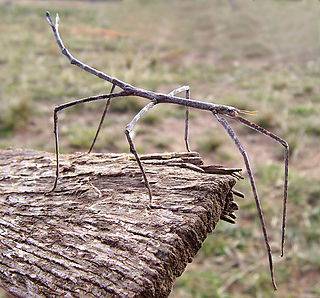
The Phasmatinae are a subfamily of stick insects in the family Phasmatidae. They contain at least three tribes; Bradley and Galil corrected the spelling to "Phasmatinae" and provides a key to tribes.
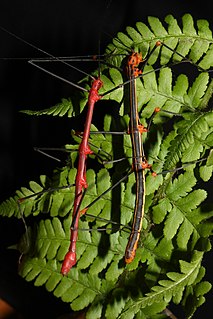
Diapheromerinae is a subfamily of the stick insect family Diapheromeridae. They belong to the superfamily Anareolatae of suborder Verophasmatodea.
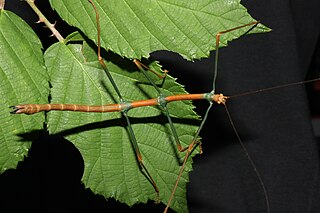
Lonchodes is a genus of stick insects in the family Phasmatidae and the type genus of the family Lonchodidae and tribe Lonchodini. Species have a known distribution that includes tropical Asia and the Pacific.

Diapheromerini is a tribe of walkingsticks in the family Diapheromeridae. There are at least 30 genera Diapheromerini.

Necroscia is an Asian genus of stick insects in the family Diapheromeridae and subfamily Necrosciinae. Species have been recorded from South-East Asia.

The Clitumninae are a sub-family of stick insects in the family Phasmatidae found in Asia. The type genus Clitumnus is now considered a synonym of Ramulus.

The Lonchodinae are a subfamily of stick insects in the family Lonchodidae found in: Australasia, Asia, Africa, Southern America and the Pacific.
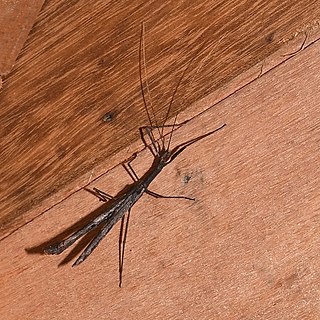
Isagoras is a genus of striped walkingsticks in the family Pseudophasmatidae. There are more than 25 described species in Isagoras.

Phasmatini is a tribe of stick insects in the family Phasmatidae. There are more than 40 described species, found in Australasia, Asia and possibly Brazil.

The Gratidiini are a tribe of stick insects based on the type genus Clonaria and first used by Cliquennois in 2005. Genera are known to be distributed in: Africa, Europe, temperate and tropical Asia and various Pacific Islands.
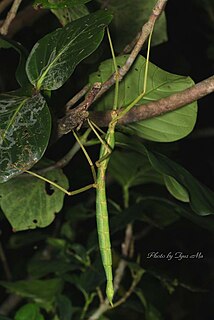
Phasmotaenia lanyuhensis is a species of stick insect, order Phasmatodea. It is endemic to Taiwan. It is often included in the family Phasmatidae, although sometimes excluded from it when the family is strictly delimited. It derives its specific name from its type locality, Lanyuh Island, commonly known as Orchid Island.

The Platycraninae are an anareolate subfamily of stick insects in the family Phasmatidae. Their known distribution includes southern, southeast Asia and Australasia.

The Megacraniinae are an anareolate subfamily of stick insects in the family Phasmatidae. Their known distribution includes Malesia and islands in the Pacific and Indian oceans. Several genera have been revised and were placed previously in the Platycraninae.
Pachymorpha is a genus of phasmids belonging to the family Diapheromeridae.

The Cladomorphinae are a subfamily of stick insects in the family Phasmatidae. This taxon is particularly well represented in the Neotropical region, but records also exist for Madagascar, Java and the Maluku Islands.
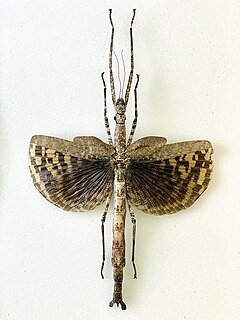
Phasma gigas is a large-sized stick insect found in Maluku Islands, Sulawesi, Gorong Islands and Kei Islands. It is often believed that Phasma gigas is present on New Guinea, but in fact, all New Guinean records actually refer to Phasma reinwardtii. Furthermore, the historic records from Sulawesi are doubtful and need more evaluation.


















